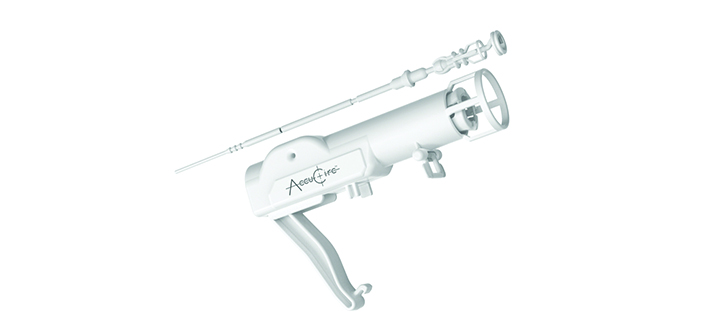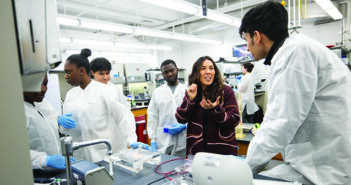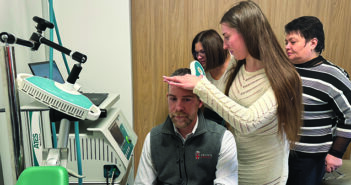To prevent botched circumcisions, this engineer-turned-family doctor invented a better device.
It was a near-miss in Newport that pushed David Tomlinson, MD, to first rethink modern circumcision.
The Iraq War had just started, and the family physician stationed at Naval Station Newport could already feel the strain of a severely reduced staff. On that day, Tomlinson was preparing to circumcise a friend’s baby; he had followed this Navy family for nine months, and had delivered the boy himself. But in his exhaustion, he mismatched the parts of the clamp—and though he caught himself in time, Tomlinson realized that the baby’s penis could have been severely injured.
“I’m going to fix this,” he recalls telling himself in that moment. “I’m going to develop a device that prevents mismatching parts.” He couldn’t believe that the most popular circumcision device in the US, first introduced in 1935, remained unchanged and could allow this error to occur.
It was a perfect storm of circumstances. Tomlinson is a mechanical engineer by training, a family physician by practice, and an inventor by choice. As a medical resident at the Navy base in Pensacola, FL, Tomlinson learned of a long history of circumcision in the military: In World War II, for instance, many soldiers were circumcised prior to entering combat. As he moved from base to base, Tomlinson had to be trained in a variety of different circumcision devices.
It didn’t take the MIT-trained engineer and circumcision expert with a knack for entrepreneurship long to realize that simple changes could prevent tragic accidents. With a team of inventors, Tomlinson developed the AccuCirc device. “The dimensions of the clamp are unique, so providers can’t use the wrong shield with the wrong clamp,” he says, ensuring the penis is protected.
As research emerged that circumcision prevents transmission of HIV, Tomlinson developed a disposable version of the AccuCirc. “If I had a newborn male anywhere in the world, I could perform a circumcision with just what’s in the kit,” he says. He adds that several African countries have evaluated his device for adoption in the fight against HIV.
In the past seven years, Tomlinson was called to testify as an expert witness in 15 amputation medical malpractice cases. By the 10th case, he had had enough. “About two times per year, a newborn baby’s penis is amputated, which is a small percent of the total number of circumcisions performed,” he says. “But it’s ridiculous. It should never happen.”
That spark was the rationale for the SafeCirc Center of Excellence, which Tomlinson founded last year in Wakefield, RI. His life’s mission is to continue to improve male circumcision care around the world. A clinical assistant professor of family medicine at Brown, his twin passions are teaching medical students and building trust with patients by providing comprehensive education about the procedure. “If you don’t want to teach medicine, you shouldn’t become a doctor,” he says.
Tomlinson reminds physicians-in-training that anyone can make medicine, and the world, better. “Things never change unless somebody makes a difference,” he says.




